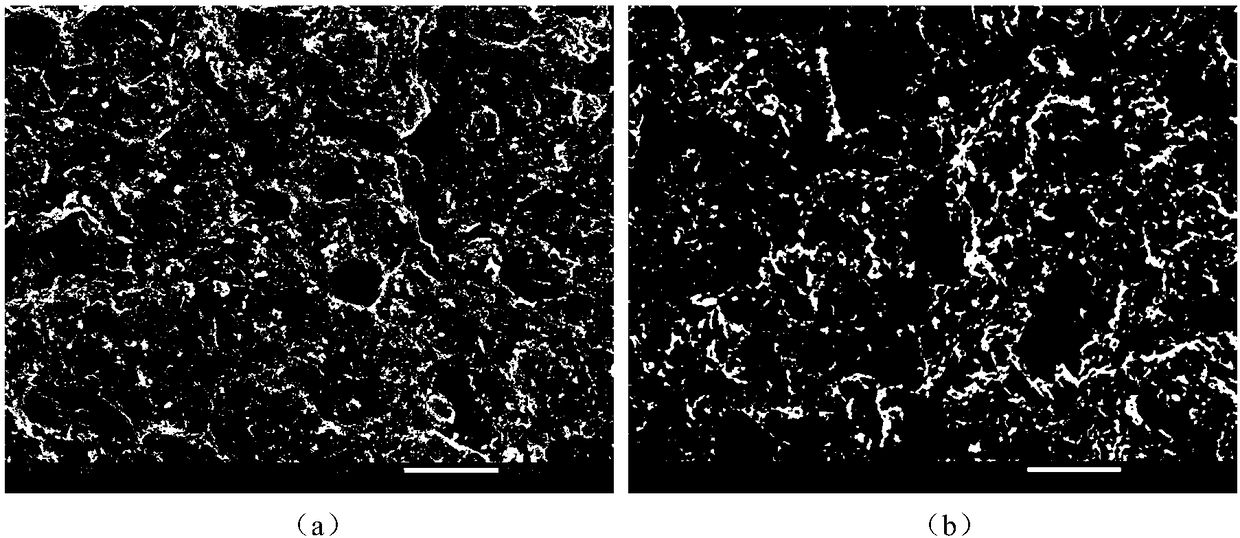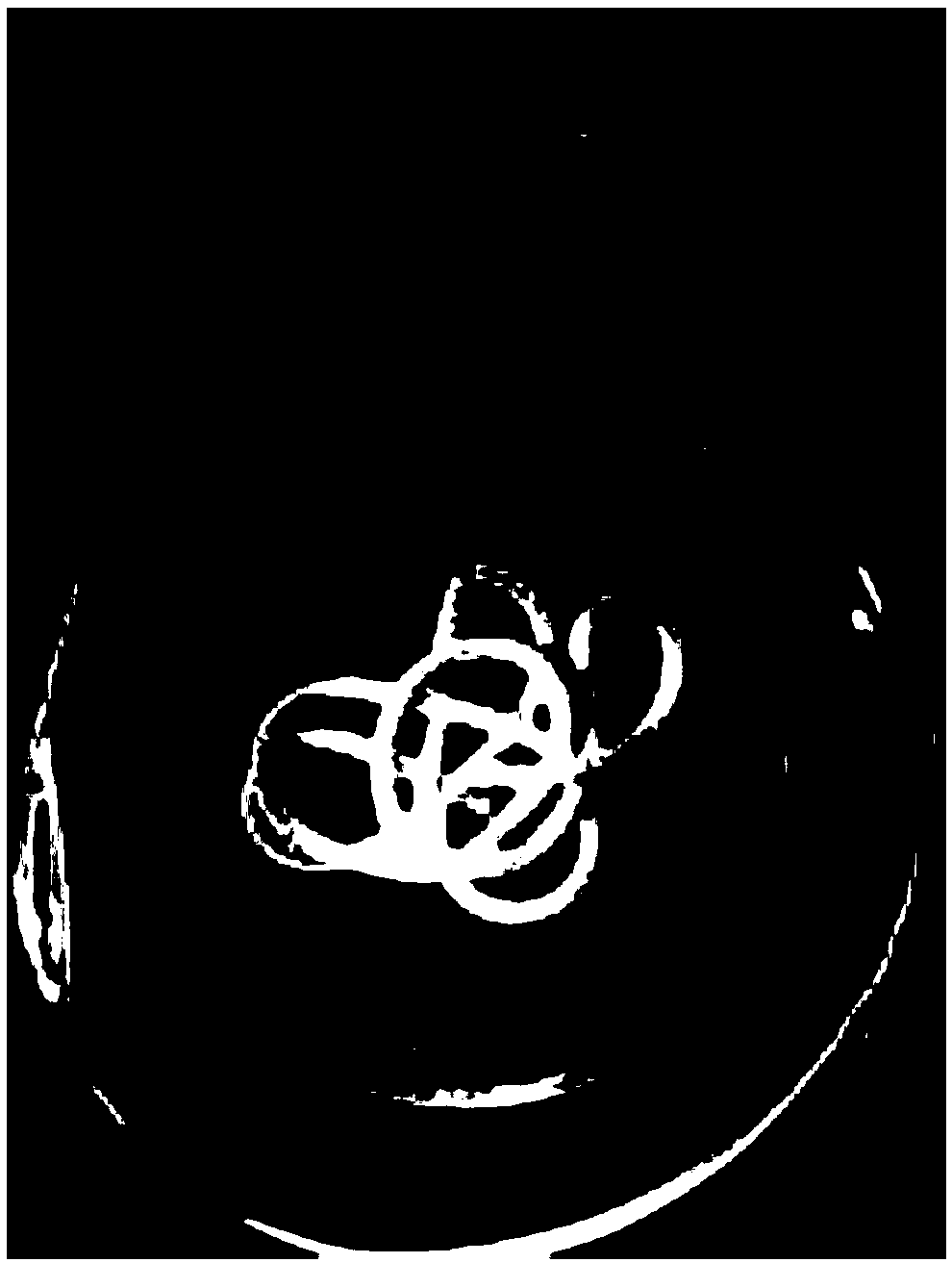Bone cement with induction and degradation characteristics and preparation method of bone cement with induction and degradation characteristics
A bone cement and characteristic technology, applied in medical science, tissue regeneration, prosthesis, etc., can solve the problems that are difficult to meet minimally invasive treatment, hinder the growth of bone tissue, lack of osteoinductive activity, etc., and achieve excellent compressive strength and degradation rate , Improve the ability to promote osteogenesis, excellent biocompatibility effect
- Summary
- Abstract
- Description
- Claims
- Application Information
AI Technical Summary
Problems solved by technology
Method used
Image
Examples
Embodiment 1
[0031] A bone cement (injection type) with inductive degradation characteristics, prepared by the following method: 30 parts of β-calcium sulfate hemihydrate, 10 parts of calcium sulfate dihydrate, 55 parts of α-TCP, sodium carboxymethylcellulose 2 3 parts of calcium chloride, mechanically milled for 10 minutes to mix the powder evenly, then add 2wt% disodium hydrogen phosphate solution according to the solid-to-liquid ratio of 1:0.4, stir it into a slurry, then transfer it to a syringe, and inject it into a physiological In salt water, it will not collapse for three days, and the injection time is 17 minutes. It is injected into the mold, and then placed in a constant temperature and humidity box (temperature 37°C, humidity 98%) to cure and form. After curing for 3 days, the compressive strength is 27MPa.
Embodiment 2
[0033] A bone cement (injection type) with inductive degradation characteristics, prepared by the following method: 20 parts of α-calcium sulfate hemihydrate, 25 parts of calcium sulfate dihydrate, 47 parts of α-TCP, 2 parts of sodium hyaluronate, 1 part of sodium citrate, grind it mechanically for 20 minutes to mix the powder evenly, then add 2wt% disodium hydrogen phosphate solution according to the solid-to-liquid ratio of 1:0.5, stir it into a slurry, then add 5 parts of DBM bone meal, and continue stirring for 1 minute, Make DBM evenly dispersed. Transfer the sample to a syringe, inject it into physiological saline, it will not collapse for three days, and the injectable time is 16 minutes, inject it into a mold, and then put it in a constant temperature and humidity box (temperature 37°C, humidity 98%) for curing and molding. After 3 days, the compressive strength is 21MPa.
Embodiment 3
[0035] A bone cement (injection type) with inductive degradation properties, prepared by the following method: 30 parts of β-calcium sulfate hemihydrate, 15 parts of calcium sulfate dihydrate, 40 parts of α-TCP, 2 parts of sodium alginate, chlorine 3 parts of calcium chloride, mechanically grind for 10 minutes to make the powder mix evenly, then add 3wt% disodium hydrogen phosphate solution according to the solid-to-liquid ratio of 1:0.6, stir into mud, then add 10 parts of DBM bone meal, continue stirring for 1 minute, make DBM is evenly dispersed. Transfer the sample to a syringe, inject it into physiological saline, the injectable time is 16 minutes, it will not collapse for three days, inject it into a mold, and then solidify it in a constant temperature and humidity box (temperature 37°C, humidity 98%) for 3 days After that, the compressive strength is 19MPa.
PUM
| Property | Measurement | Unit |
|---|---|---|
| size | aaaaa | aaaaa |
| compressive strength | aaaaa | aaaaa |
| compressive strength | aaaaa | aaaaa |
Abstract
Description
Claims
Application Information
 Login to View More
Login to View More - R&D
- Intellectual Property
- Life Sciences
- Materials
- Tech Scout
- Unparalleled Data Quality
- Higher Quality Content
- 60% Fewer Hallucinations
Browse by: Latest US Patents, China's latest patents, Technical Efficacy Thesaurus, Application Domain, Technology Topic, Popular Technical Reports.
© 2025 PatSnap. All rights reserved.Legal|Privacy policy|Modern Slavery Act Transparency Statement|Sitemap|About US| Contact US: help@patsnap.com



